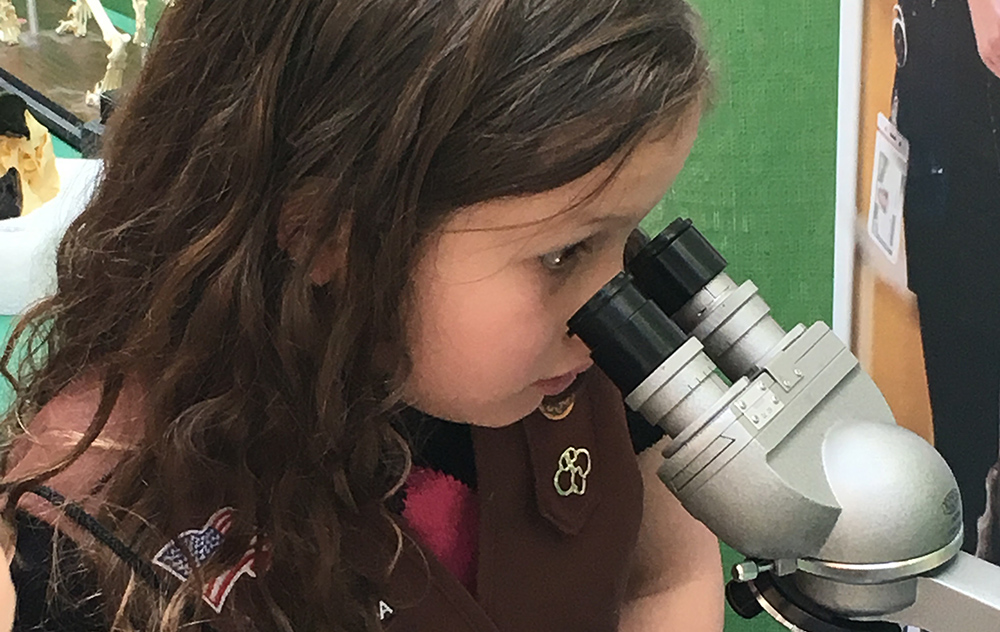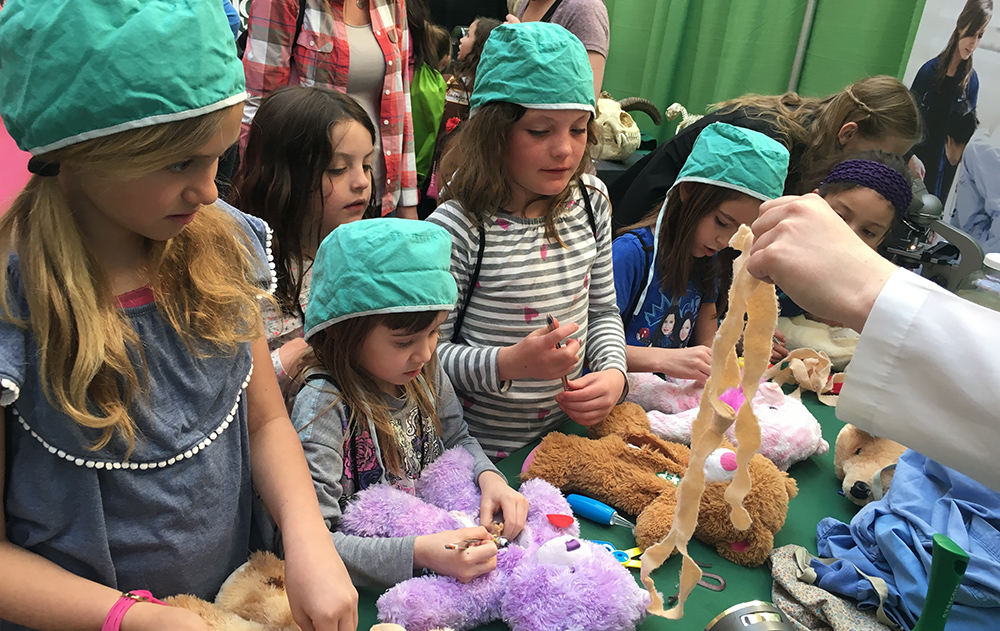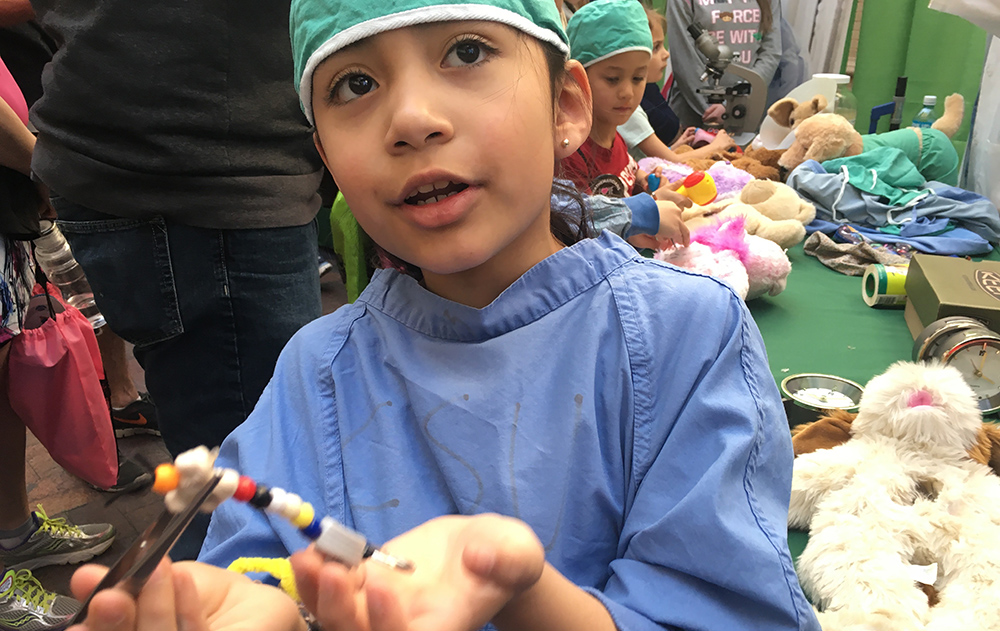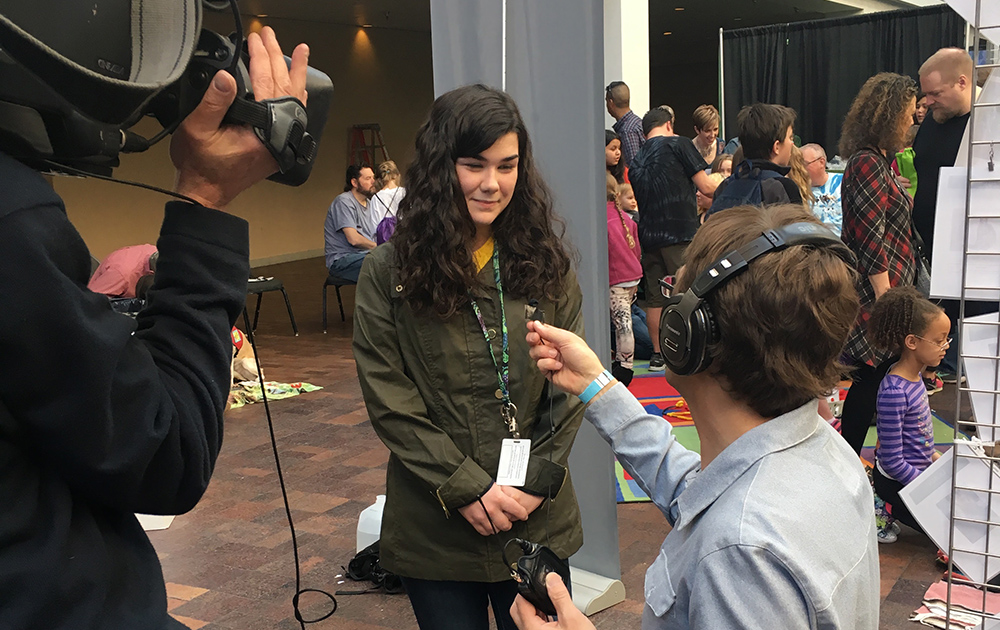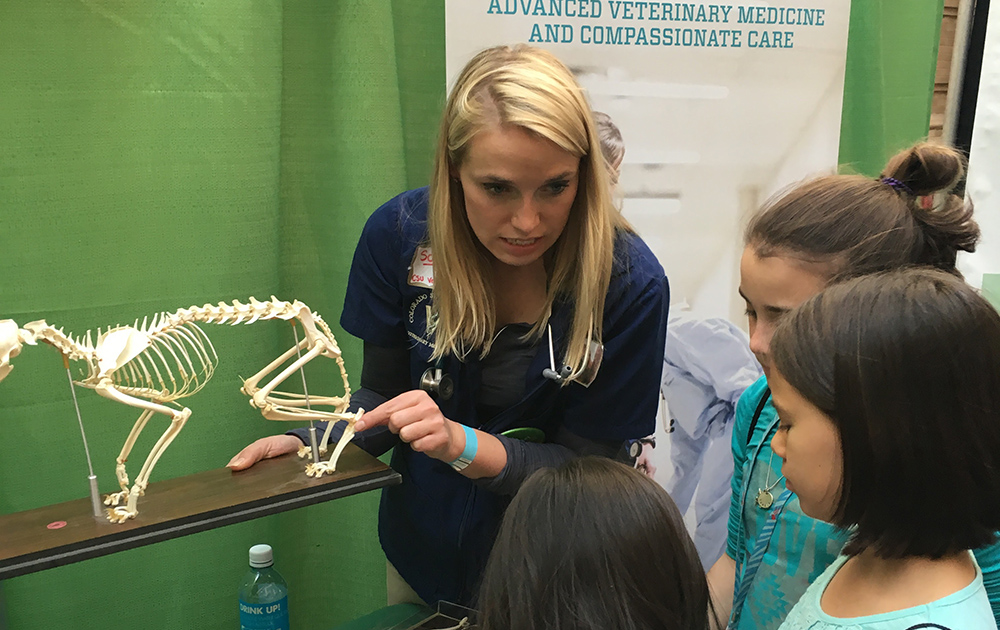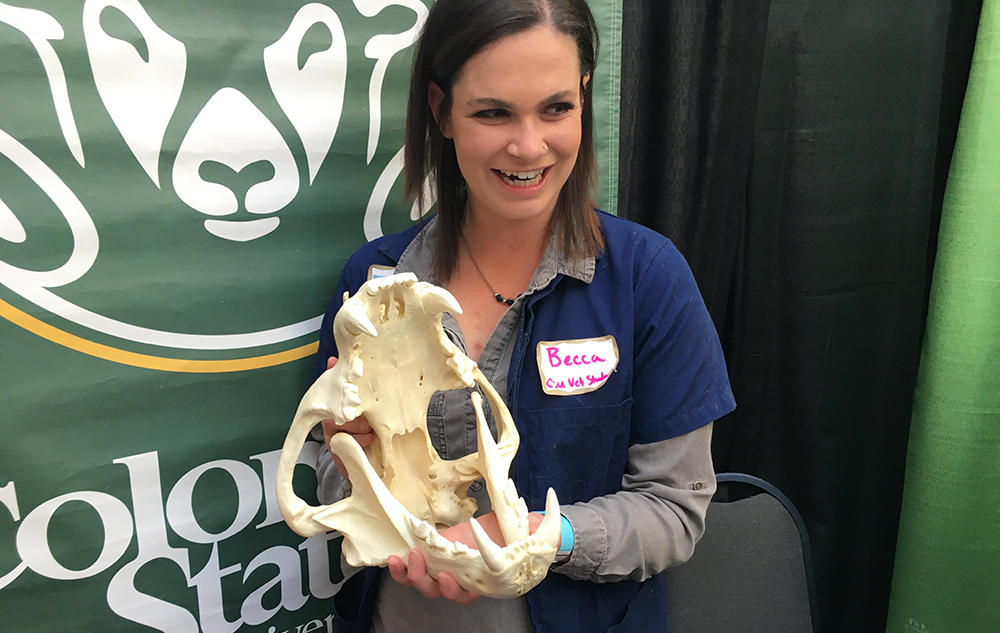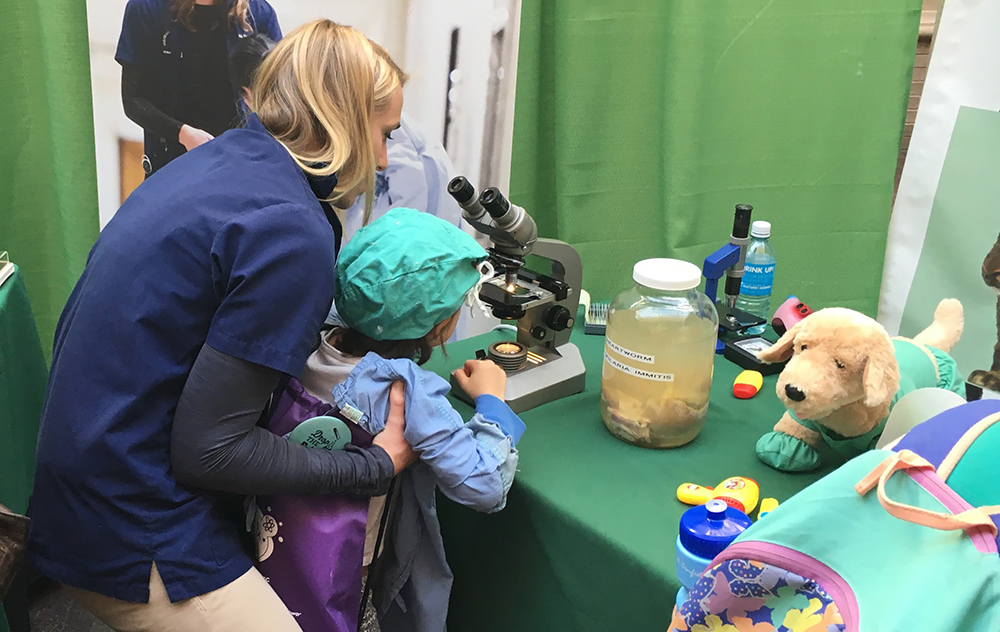The 10 female veterinary students who volunteered at Girls & Science Saturday to demonstrate to children how to bandage a paw, identify a tiger skull, and look through a microscope could have been those wide-eyed young girls just a few years ago.
And those kids at the Denver Museum of Nature & Science event might just find themselves studying veterinary medicine, or any number of science, technology, engineering, art or math fields just a few years from now.
“I dream of being on an admissions committee in 20 years, and reading an essay that says they came to this event and were inspired to apply to vet school,” said CSU veterinary student Claire Tucker. “So many vet students talk about having a passion for animals, but so many young girls still don’t know what they can do with that. Hopefully, we will be a spark in the back of their heads as they grow up.”
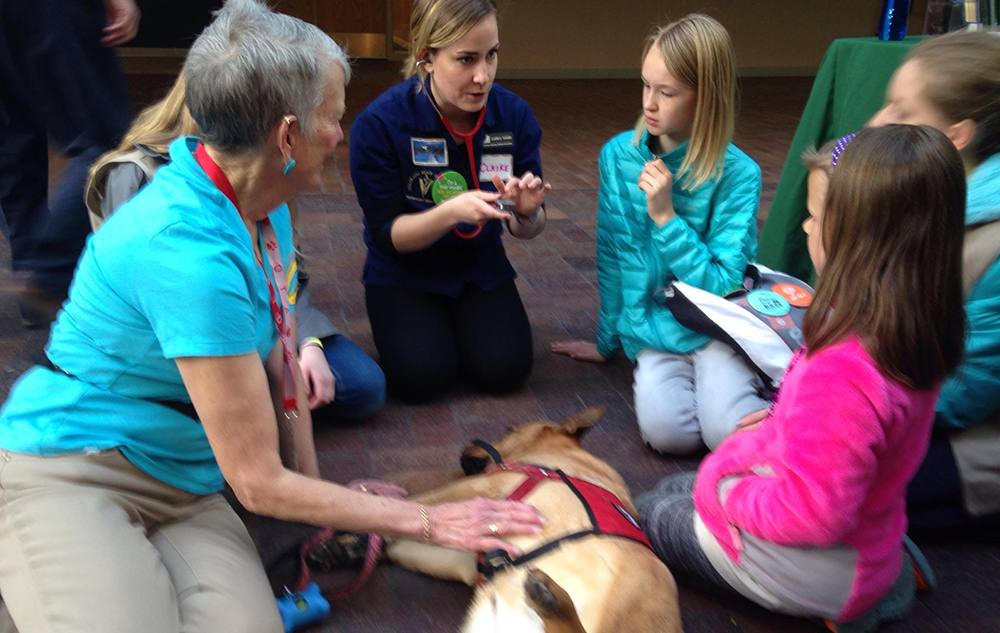
Tucker organized the event’s Colorado State University clubhouse, one of 25 experiences designed to expose girls to the world of possibilities in STEAM careers. Therapy dogs lolled around on colorful carpets while girls used stethoscopes to listen to their heartbeats. Tiny hands wrapped bandages around stuffed animal legs and used real forceps to “operate” on teddy bears. Wide eyes peered into microscopes, marveling at the squiggly shapes of bacteria. Future doctors studied X-rays and skeletons, guessing which animals they belonged to.
Girls of all ages, and their adult companions, peppered the students with questions in English and Spanish about what it’s like to be a vet student.
“As a Latina, I think it’s really important to be out in the community showing girls what they can do, which is anything,” said Dr. Graciela Guzman, a CSU veterinary alumna who volunteered and brought her daughter, Lilah, 10. As Lilah gravitated toward the therapy dogs, her mother switched back and forth from Spanish to English as an endless stream of girls learned how to properly wrap a bandage and hold forceps.
“This is very important for surgery, I’m not event kidding,” said Dr. Caroline Cantner, waving a lint roller. “Why do you think we need this in a veterinary hospital? There’s a lot of fur.” Cantner spent a good part of the day coaching girls through mock surgeries on teddy bears.
“I’m Dr. Abigail now. We need some patients here!” said Abigail Loera, outfitted in a surgical smock and cap, as she pulled a felt heart out of a furry mock patient.
“Today, we had so much fun learning about people’s degrees and the paths they took,” said Renata Robey, a librarian and former copy editor, whose 14-year-old daughter, Charlotte Anderson, wants to work with animals. While her mom gathered up brochures on how to prepare for vet school, Charlotte made a beeline for the therapy dogs who patiently allowed girls to pet and prod them.
“It was so cool to see girls get into science and support each other,” said Grace Messmer, 16, who plans to study sustainability in college. She attended with her friend Emily Howard, also 16. They were both interviewed by a crew from CBS4.
“It means a lot to have us all here, to have girls being told that it’s OK to be interested in science and that they can do anything,” said Howard, who wants to be an aerospace engineer.
“Looks at all those ribs!” said vet student Sophie Nelson as she showed a little girl a skeleton. “Where are your ribs?”
“I love working with children. This is a great tool to show girls the vast opportunities out there for them,” said Becca Tierce, a second-year vet student, as sticky fingers reached into the mouth of a tiger skull.
But it wasn’t just the kids who were inspired. “When I graduated from high school in 1962, I wanted to be a veterinarian, but I was told women couldn’t go to vet school,” said Judith Schwartz, who attended with her granddaughter, 11-year-old Riley Wallis. “It’s exciting because girls can build and girls can create things that were never available to me.” Her granddaughter nodded and said, “Things have changed pretty dramatically for girls. We have this many rights now,” she said, raising her hand above her head.
“The cool part is sharing your knowledge,” said Sophie Nelson. “I’m really passionate about increasing diversity and getting girls into science. It’s really cool when they listen to the dogs’ heartbeat and their eyes get really big.”
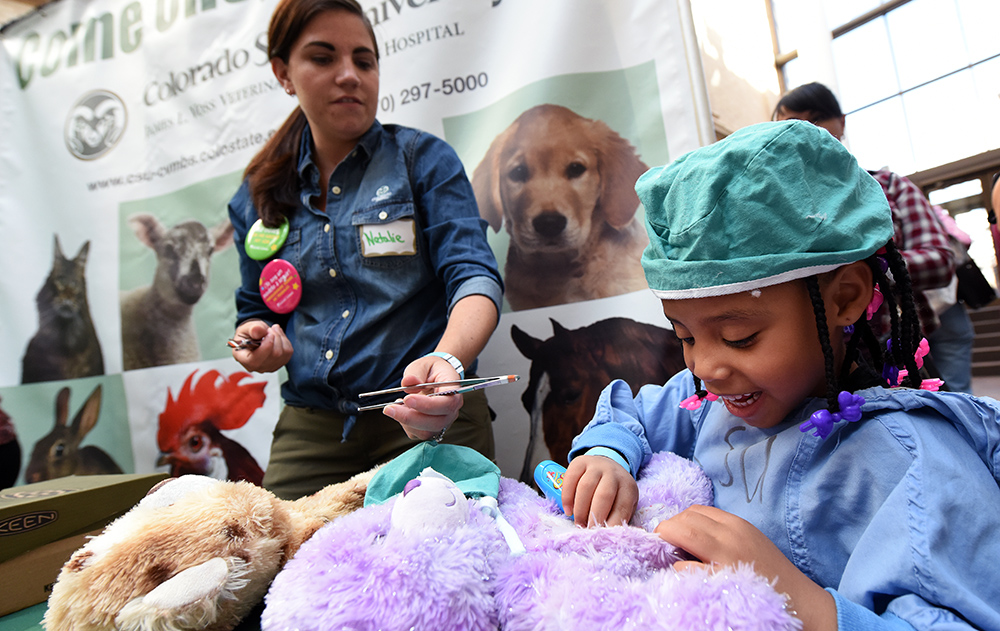
Above: Photo by Chris Schneider for Denver Museum of Nature and Science
“I love being involved in community outreach,” said fourth-year vet student Natalie Urie. “It’s a great opportunity to teach young females about all of the opportunities in vet med.”
Girls are just as interested in science and math as boys until around middle school, when interest levels steeply decline. Researchers attribute that to often-unconscious gender bias that causes parents, other students and even teachers to suggest, directly or indirectly, to girls that they lack aptitude in those fields. The U.S. Department of Labor, Bureau of Labor Statistics currently reports that women make up 57 percent of the U.S. workforce, but only 26 percent of the computer and mathematics occupations.
Colorado State University and Denver Museum of Nature & Science
Two leading Colorado educational institutions, CSU and Denver Museum of Nature & Science, have an agreement to work together to elevate research, enhance learning opportunities for students and the public, and highlight academic alignment. The museum and the university have a history of education, innovation, and outreach. The institutions also work as key stakeholders in the revitalization of the National Western Center, a planned 250-acre site in North Denver, which will be home to the National Western Stock Show in January, and year-round educational, cultural, and entertainment activities.
